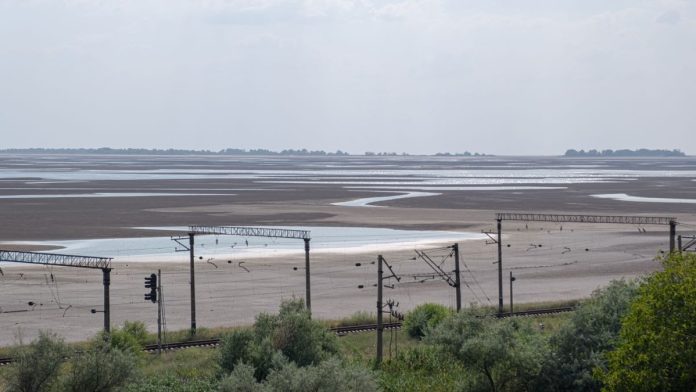If ecologists manage to save a willow array that is actively developing on the site of the destroyed Kakhovka reservoir, the largest willow forest in Europe may occur at 20 years. This was stated by Academician of NAS of Ukraine Yakov Didukh, Head of the Department of Geobotany and Ecology of the M.G. Cold NAS of Ukraine.
According to Jacob Didukh, the rapid shaming of the Kakhovka reservoir, which resulted from the destruction of the Kakhovka hydroelectric power station by the Russians in June 2023, created the ideal conditions for the germination of the willow. It was during this period that the willow gave seeds that sprouted profusely. Already in the fall of that year, willow sprouts reached 2 meters in height, and up to 25 new plants could be seen per square meter. "These trees grew very well because the mules at the bottom of the reservoirs were rich in nutrients," the scientist explained. He also added that by the fall of 2024, these willows reached 5 meters in height.
Yakov Didukh noted that the willow grows very quickly, and if ecologists can ensure the preservation and further restoration of this ecosystem, a real willow forest can be formed in the place of the shallow reservoir after 20 years. It will be the largest such array in Europe. Such ecosystems have a huge biodiversity. According to zoologists, up to 60 species of birds and up to 450 species of insects can live in such willow forests, including rare ones. Therefore, such forests are important for biodiversity conservation and are often protected.
However, the process of restoration of the natural ecosystem will be complicated by the presence of foreign species. As a result of Russian aggression, new, uncharacteristic species of flora and fauna can be invaded into the ecosystem area. Despite this, environmentalists make every effort to preserve and restore unique willow floodplain forests known as a large meadow. "It will not be as the forest as it was before the destruction of the Kakhovka hydroelectric power station, but to restore its potential and make it environmentally useful is an important task for us," Jacob Didukh summarized.
Restoration of a willow array at the site of a destroyed Kakhovka reservoir can be an important step in preserving biodiversity and creating a new natural environment that is of great importance for Europe. However, this process requires support and protection against potential threats, both natural and anthropogenic.


